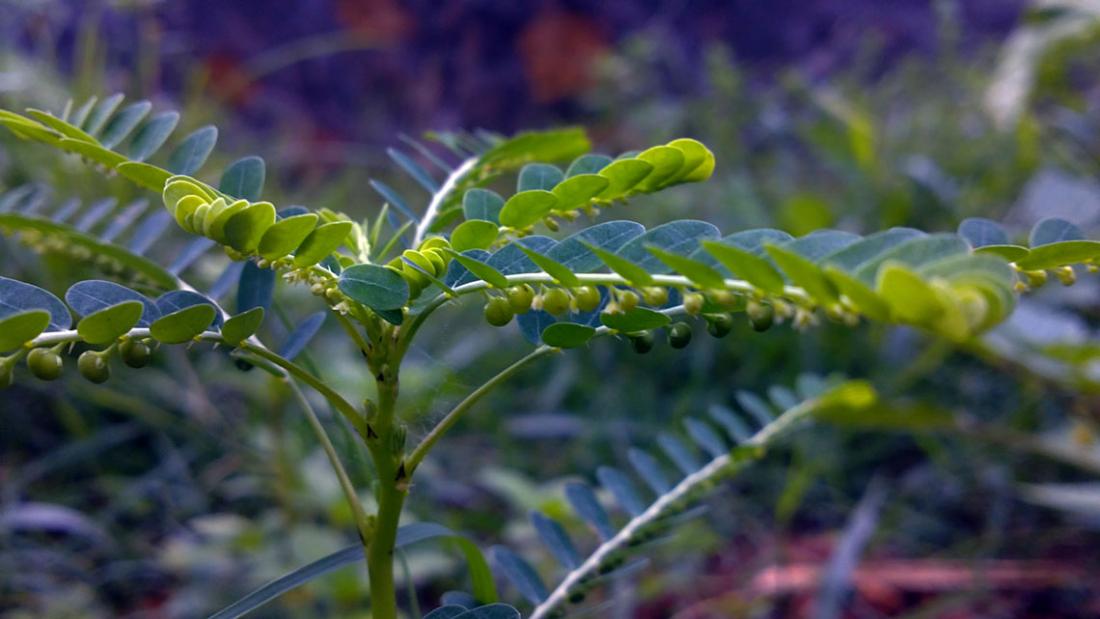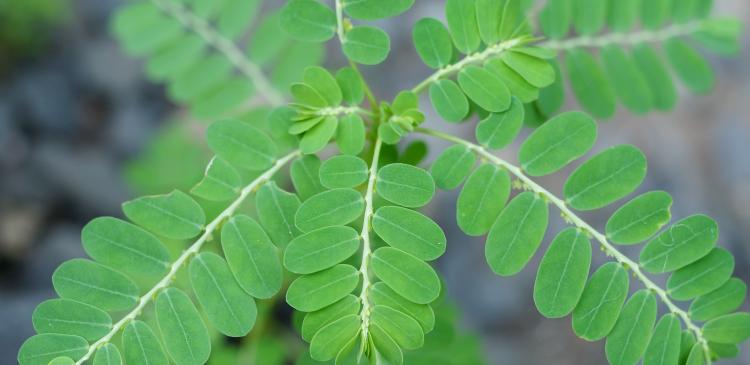Phyllantus niruri (above) and Phyllanthus (below) urinaria are common herbs found throughout the tropics and subtropics that show strong potential as a non-toxic treatment for breast cancer.
Four species of Phyllanthus, herbs commonly found throughout the tropics and subtropics, pose great potential as nontoxic breast cancer treatments. While their therapeutic properties have been reported, a team from the University of Malaya recently investigated specifically how the plants’ extracts combat breast cancer.
Phyllanthus is a large family of flowering plants with hundreds of species, including chamber bitter, stonebreaker, gale of the wind and leafflower. The research team found that extracts from Phyllanthus niruri, Phyllanthus urinaria, Phyllanthus watsonii and Phyllanthus amarus inhibited the growth and spread of breast cancer cells and induced cell death in two ways.
First, they suppressed two proteins notorious for breaking down the extracellular matrix: a medium that surrounds cells, providing structural and biochemical support. Matrix metalloproteins 2 and 9 break down this medium, giving tumour cells access to the vascular system and enabling them to spread. Phyllanthus extracts block the pathway used by tumours to regulate this process.
The plants also reduce tumour growth by interrupting the cancer’s ability to grow blood vessel cells. Specifically, the plants inhibit the production of a key compound that becomes more abundant during oxygen deficiency and is associated with ‘turning on’ more than 70 genes that favour tumour growth. This results in reduced blood vessel growth and leads to cell death.
The team found that Phyllanthus urinaria was slightly more effective in targeting cancer cells, perhaps because of the high presence of polyphenol compounds that have antioxidant properties. Years of further animal studies and human clinical trials will be required before the herbs can be used to treat patients.
Ancient Chinese herb targets specific tumours
A team from the Institute for Basic Science at the Ulsan National Institute of Science and Technology (UNIST) in Korea and the National Human Genome Research Institute in the US also investigated how another plant extract, called baicalein, successfully shrinks colon tumours in mice. Baicalein comes from Scutellaria baicalensis and Scutellaria lateriflora: flowering herbs, commonly called skullcap, which are used in traditional Chinese medicine.
While others have confirmed baicalein’s anticancer properties, the team studied how it specifically targets and shrinks cancers that have mismatch DNA repair defects.
When DNA replicates, errors can arise in the nucleotide base pair sequence, like typos in a sentence, creating ‘mismatched DNA’. Usually, mismatch repair (MMR) proteins identify the typo, cut it out, and then the correct sequence can be synthesized. But cells that lack MMR proteins can’t do this, so mismatched DNA base pairs continue to replicate. As errors accumulate, tumours can grow unchecked.
Tumour cells lacking MMR proteins typically resist commonly used chemotherapies. Baicalein appears to specifically bind to sections of mismatched DNA, which causes the DNA to break apart during replication, ultimately killing the cell.
The researchers implanted baicalein pellets adjacent to MMR protein-deficient colon tumours in mice and found the tumours shrank in size twice as much as similar tumours in mice given a placebo treatment. They also found that mice given a diet enhanced with baicalein formed fewer tumours compared to a control group.
Baicalein shows strong potential for cancer treatment because it has a clear target. It is particularly promising as a colon cancer treatment because about 10% of colon tumours lack mismatch repair proteins. However, it is not close to being ready for clinical applications because its potency is low and may have unintended side effects. Further studies are required to turn the extract into an effective treatment for human patients.
Further information
Dr Shamala Sekaran | E-mail: [email protected]
Department of Medical Microbiology
University of Malaya
Professor Kyungjae Myung | E-mail: [email protected] or [email protected]
Center for Genomic Integrity, Institute for Basic Science
Ulsan National Institute of Science and Technology




